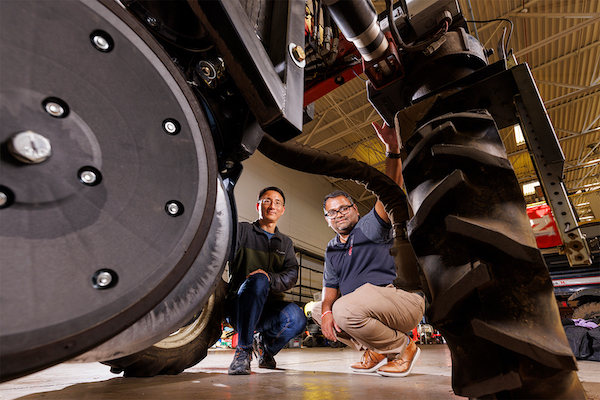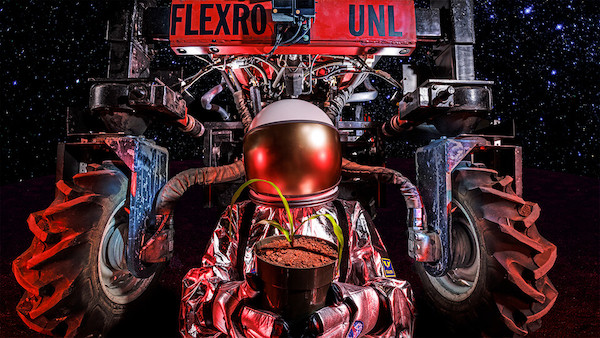Humans have lofty goals of spreading out across the universe and establishing outposts on the moon, Mars, and beyond. While the technologies that will carry us to these distant locales continues to advance, another major obstacle that needs to be solved is food production. At University of Nebraska-Lincoln, engineers Yufeng Ge and Santosh Pitla want to tackle the challenge by creating the first University research center dedicated to space agriculture in the United States.
Ge and Santosh, who are both professors in UNL’S Biological Systems Engineering department, note that no US university features a center dedicated specifically to the study of space agriculture. “If NASA or the big space companies — SpaceX, Virgin Galactic, Blue Origin — want to go out and work with a university, who would that be?” Pitla said. “We have been doing ag research for more than 100 years, and we’re an ag state. Why reinvent the wheel somewhere else when we already have all this experience?”
The duo have founded the “Consortium of Space, Policy, Agriculture, Climate, and Extreme Environment,” or “SPACE2,” to explore advanced farming methods that could be used on the moon, Mars, and potentially other space destinations. As a cross-disciplinary team effort, Ge and Pitla are working with other NU institutions as well, including the College of Law to navigate the largely uncharted nature of space law. Meanwhile, Daugherty Water for Food Global Institute’s efficient water usage and Greenhouse Innovation Center’s resilient crop breeding have laid the groundwork for space-ready agriculture.
Ge and Pitla provide the technological edge for extraterrestrial farming. Ge’s own research into ag-relevant sensors is informing more precise, efficient application of fertilizer and water, both of which will prove even more precious in space. Pitla has spearheaded the engineering and testing of Flex-Ro, an autonomous planter that can already seed a 5-acre, untilled field on its own.
With the help of a two-year, $150,000 grant from UNL’s Office of Research and Economic Development, Ge and Santosh are already working to determine exactly what types of crops to focus on. Ge said successful crops need to be easy, quick, and efficient to grow. Ideal crops would also provide a range of nutrients to sustain a healthy person including protein, carbohydrates and lipids. Taste could also be considered.
Some crops that are strong candidates are staples like soybeans and corn. Soybeans, particularly, could help terraform a Martian surface that lacks nitrogen. That would give future generations of crops on Mars a building block. “A soybean is quite complete in terms of its nutritional value and it can fix nitrogen,” Ge said. “It can produce biodiesel. Therefore, you can have fuel for the return mission if you do it right.”
SPACE2 has also recruited outside groups to the effort, including researchers at Ohio State University, the University of Illinois, and the University of Minnesota. Ge and Pitla are also working with Honeybee Robotics, a subsidiary of space tourism company Blue Origin, through the association. With the initial $150,000 grant set to end after this year, Ge and Pitla plan to apply for another grant worth around $5 million, now that they have a clearer idea for researching sustainable food methods beyond Earth. (Sources: UNL, Feedstuffs, TS2)








